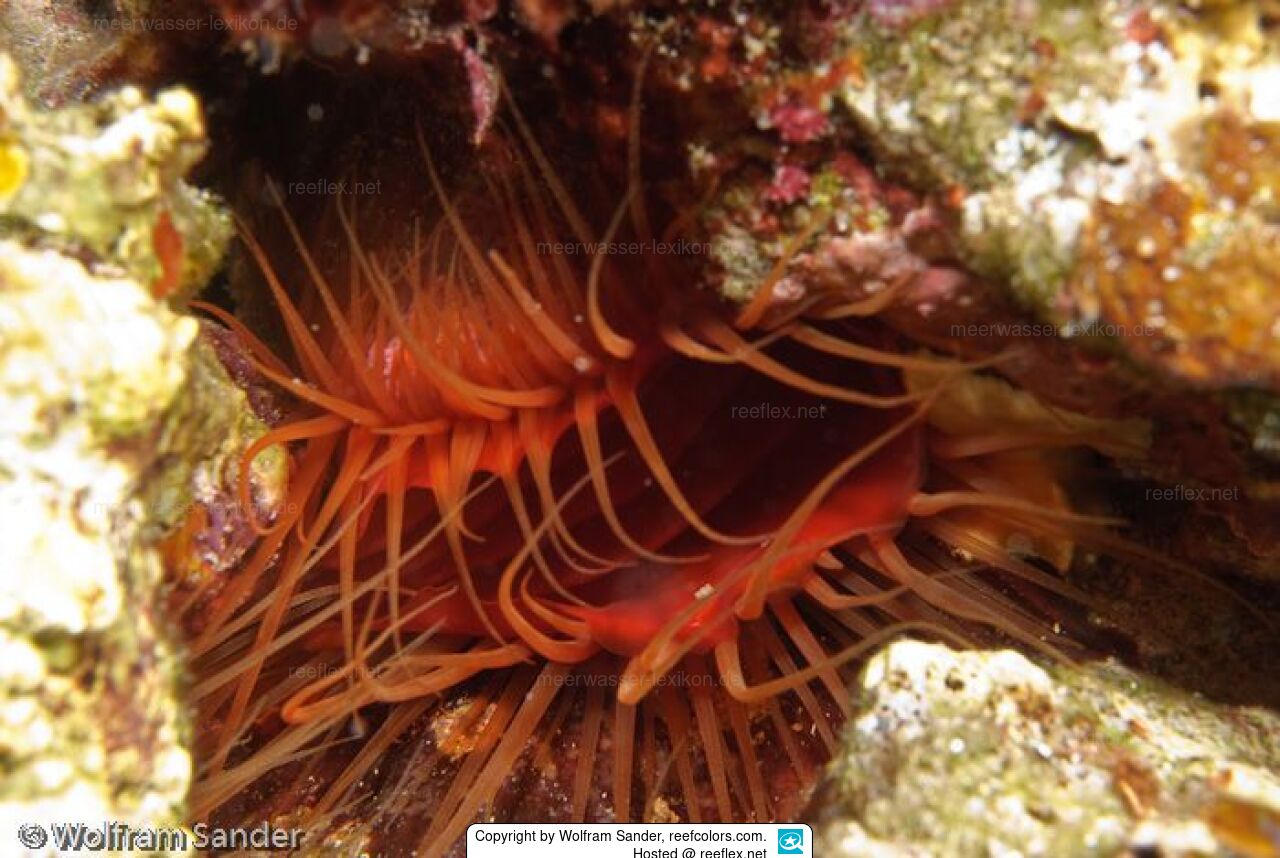Info
Ctenoides scaber (Born, 1778)
The information on keeping comes from S. Heidler:
Keeping preferred in pure invertebrate tanks! Here, settle in the front part of the tank. Mussels can swim around freely, but usually attach themselves to a well-flowed location by means of byssus threads.
Lighting is rather subordinate, depends on the other animals.
Proper nutrition is very important: the most frequent cause of death in file mussels is lack of food. Naupliar larvae or rotifers should be fed directly to the mussel with the current once or twice a day.
Filter with protein skimmer, activated carbon and trickle filter. Moderate to strong current.
Special features: The mussel is able to swim independently in jerky movements, occasionally seeking out locations behind live stones.
Regular, controlled feeding cannot be guaranteed here!
In fish tanks, the mussels are attacked and eaten by the fish at the slightest sign of disease. The mussel meat is appreciated by many fish.
File mussels are real food specialists. Food supply is the biggest problem here and can be solved in a larger nano tank, as the mussel filters its food from the water. This includes phythoplankton and free-swimming copepods or brachionus. It is not advisable to keep them in a reef aquarium, as the necessary food density is not permanently available. Of course, the life span can be prolonged for a certain time with targeted feeding using a pipette. In this case, feeding must take place at least 3 - 5 times a day.
Synonyms:
Ctenoides scabra (Born, 1778)
Lima aspera Thiele, 1918
Lima glacialis (Gmelin, 1791)
Lima scabra (Born, 1778)
Ostrea glacialis Gmelin, 1791
Ostrea sagrinata Bruguière, 1790
Ostrea scabra Born, 1778
The information on keeping comes from S. Heidler:
Keeping preferred in pure invertebrate tanks! Here, settle in the front part of the tank. Mussels can swim around freely, but usually attach themselves to a well-flowed location by means of byssus threads.
Lighting is rather subordinate, depends on the other animals.
Proper nutrition is very important: the most frequent cause of death in file mussels is lack of food. Naupliar larvae or rotifers should be fed directly to the mussel with the current once or twice a day.
Filter with protein skimmer, activated carbon and trickle filter. Moderate to strong current.
Special features: The mussel is able to swim independently in jerky movements, occasionally seeking out locations behind live stones.
Regular, controlled feeding cannot be guaranteed here!
In fish tanks, the mussels are attacked and eaten by the fish at the slightest sign of disease. The mussel meat is appreciated by many fish.
File mussels are real food specialists. Food supply is the biggest problem here and can be solved in a larger nano tank, as the mussel filters its food from the water. This includes phythoplankton and free-swimming copepods or brachionus. It is not advisable to keep them in a reef aquarium, as the necessary food density is not permanently available. Of course, the life span can be prolonged for a certain time with targeted feeding using a pipette. In this case, feeding must take place at least 3 - 5 times a day.
Synonyms:
Ctenoides scabra (Born, 1778)
Lima aspera Thiele, 1918
Lima glacialis (Gmelin, 1791)
Lima scabra (Born, 1778)
Ostrea glacialis Gmelin, 1791
Ostrea sagrinata Bruguière, 1790
Ostrea scabra Born, 1778







 Wolfram Sander, reefcolors.com
Wolfram Sander, reefcolors.com
























